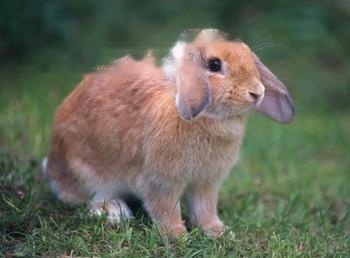
American Mini Lop
American Mini Lop Rabbit, also commonly known as Binny lop, small lop or pygmy lop.
Alias UKMini Lop, American Mini Lap, Dutch lop, Pygmy lop, Bunny
English name Mini Lop
Weight 1.2-3.5kg
Size Small Rabbit, Medium Rabbit
Long Hair Shorthair
Origin Europe
| Stickness: | Happiness: | ||
| hair loss : | Body Odor: | ||
| Beauty Frequency: | Kids Friendly: | ||
| Yes Friendly people: | Animal Friendly: | ||
| Amount of exercise: | Trainability: | ||
| saliva level : | Cold Hardiness: | ||
| Heat Resistance: | Urban Adaptation Degree: |
History The Mini Lop was developed in the 1970s and was featured at ARBA in 1980 , was recognized as a new species. Some say Holland Lop + French Lop; some say German Lop + Chinchilla Rabbit. |
Origin Place of Origin: Europe and America Common Name Alias: Lop-eared Rabbit, Bunny Rabbit English Name: Mini Lop |
character timid, likes quiet Rabbit is very timid, and when he suddenly hears a sound, he will be "shocked" and his appetite will decrease. Female rabbits who are giving birth are disturbed and often suffer from dystocia, or refuse to breastfeed their young rabbits. Apart from exercising and eating, rabbits like to rest and sleep, and they will be alarmed when there is movement. Therefore, a quiet environment for raising rabbits is very important. Cold and heat resistant The rabbit's fur is thick and resistant to severe cold. Adult rabbits can withstand temperatures below zero, and winter breeding can be carried out at about 5°C. Rabbits are very afraid of heat because their sweat glands are underdeveloped and cannot regulate their body temperature in the form of sweating. Therefore, when the outside temperature is too high, rabbits often crawl on the ground and use ground conduction to dissipate heat; or increase the number of breaths and use exhalation to bring out heat. The suitable temperature for adult rabbits is 15~25℃, and the temperature for young rabbits is 30~32℃. Nocturnal Apart from feeding during the day, rabbits like to rest or sleep in the cage, but at night, they are very active and feed frequently. According to the experiment, the feed intake of rabbits at night accounts for about 75% of the total diet. Therefore, rabbits must insist on feeding night grass. Likes burrowing Rabbit likes to burrow and burrow more frequently when it is free-range, before breeding. Therefore, when building a rabbit house, pay attention to this in design and materials. According to this habit of rabbits, we can use mountains and hills to raise rabbits in holes in places with good climate. Same-sex aggressiveness When adult male rabbits meet, they will chase each other and bite each other; when female rabbits are together, they will also bite each other. When male and female rabbits are together, they live in harmony. Therefore, when managing, try not to keep adult male rabbits or adult female rabbits together. |
Physical Characteristics Mini Lop Often confused with the Holland Lop, it is actually slightly larger than the Holland Lop. The weight of the mini lop-eared rabbit reaches 2.3 to 3 kg. The Dutch lop rabbit weighs about 2 to 2.5 kg, and the most appropriate weight is about 1.4 kg. Due to its naturally docile temperament and cute super small size, the Mini Lop Rabbit is a very suitable pet for children. Rabbits are afraid of moisture, like to clean, and hate dirty. Therefore, in terms of feeding and management, a dry and clean living environment must be created, the rabbit cage should be kept dry frequently, and the rabbit cage should be brushed every week. Feed, drinking water, feeding tools, etc. must always be kept clean. Darkness, dampness, and foul air are the main reasons why rabbits contract diseases. |